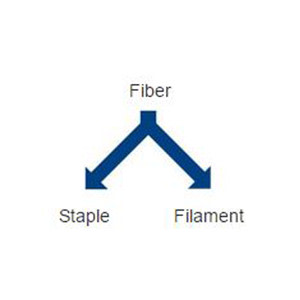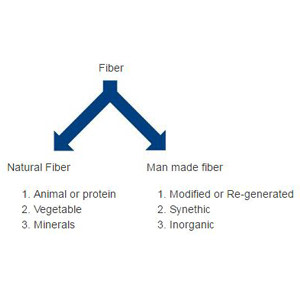What is Textile and what are the classification of fibres?
What is Textile?
Texile is a type of material composed of natural or synthetic fibers. Textile refers to any material made of interlacing fibers or yarn, including fabrics, knitted or woven fabrics, and non-woven fabrics. Textiles can be made from natural fibers such as cotton, wool, and silk, or synthetic fibers such as polyester and nylon. They can also be a combination of both natural and synthetic fibers. Textiles are used in a wide range of applications, including clothing, home textiles (such as curtains, bed linens, and towels), and industrial textiles (such as filters, geotextiles, and medical textiles). The production of textiles is a major industry worldwide, and it involves processes such as spinning, weaving, knitting, dyeing, printing, and finishing. Texiles are classified into many types.Elementary Textile
Clothing as we all know is one of the basic needs of human being. From early days itself we used it for different purposes such as covering the body, warmth, personal adornment and even display wealth. Today textiles are used for different purposes other than the above mentioned. A textile is a cloth, which is either woven by hand or machine. The word textile is a Latin word originated from the word "texere" which means to weave. The study of textiles covers the basic concepts of fibers, yarns, weaves and fabric manufacturing. It also includes various finishes that are used to enhance fabric performance and aesthetics.Fibers - Fibre (British spelling)
Fiber is the basic unit of which a fabric is made. In appearance it is a thin hair like structure of any length and can be measured in meters. Fiber is used for manufacturing fabrics as all fibers are suitable for textile purposes.Classification of Fiber
Fibers can be classified based on various factors such as their origin, structure, and properties. These classifications can be useful in understanding the characteristics and uses of different types of fibers, as well as in the development and selection of materials for specific applications. The two primary categories of fibers are natural fibers and man-made (synthetic) fibers. Natural fibers are derived from plant or animal sources, while man-made fibers are produced through chemical processes using synthetic materials. Within these categories, fibers can be further classified based on their physical and chemical properties, such as strength, elasticity, and heat resistance. By understanding the different types and properties of fibers, manufacturers and consumers can make informed decisions about materials for a variety of applications. Fiber can be classified according to its length or according to its origin.1. According to its Length

Staple fiber and filament fiber are two types of fibers commonly used in the textile industry. The main difference between them is that staple fiber is produced in a specific length and is cut to that length before being spun into yarn, while filament fiber is produced in continuous lengths without being cut. Staple fibers are commonly used in the production of fabrics for clothing, bedding, and other household items, while filament fibers are often used in the production of industrial materials such as ropes and nets. Both types of fibers have their own unique properties and uses, and manufacturers often choose one or the other depending on the desired end product. In short, Short or limited length fibers are called staple fiber and long continuous fibers are called filament fibers.Example for
Staple Fiber
- Cotton - 1.5 cms - 7 cms
- Wool - 2 cms - 20 cms
Filament Fiber
- Silk
2. According to its Origin

Natural Fibers
Natural fibers are derived from natural resources such as plants or animals and have been used for clothing and textiles for thousands of years. Examples of natural fibers include cotton, wool, silk, hemp, and jute. These fibers are often preferred for their comfort, breathability, and sustainability, as they are biodegradable and renewable. Natural fibers can be processed through spinning, weaving, and knitting to create a wide range of fabrics and textiles. While natural fibers have many advantages, they may also be more expensive than synthetic fibers and may require more care and maintenance. Additionally, the production of some natural fibers can have negative environmental impacts, such as deforestation and water usage. It can be further classified into the following catagories.- Vegetable FibersThese are fibers that are made of cellulose and naturally occuring polymer of plants. The following are vegetables fibers.
- Nut Husk :Obtained from seedpod. Example - Cottons, Coir.
- Bast Fiber :Obtained from base portion of stem. Example - Jute, Linen.
- Leaf Fiber :Obtained from leaf. Example - Pineapple leaf fiber, sisal.
- Animal FibersThese fibers are produced from animals. They are also known as protein fibers. The following are the examples.
- Hair Fiber :Obtained from animal hair. Example - Wool, Alpaca.
- Secretion Fiber :Obtained from animal secretion. Example - Silk.
- Mineral FibersMineral fibers are produced from natural mineral resources. Example - Gold, Silver.
Man made Fibers
Man-made fibers, also known as synthetic fibers, are produced through chemical processes using raw materials such as petroleum, coal, and natural gas (artificially produced or re-generated). These fibers are engineered to have specific properties, such as strength, durability, and resistance to heat and chemicals. Examples of man-made fibers include polyester, nylon, acrylic, and rayon. These fibers are often used in clothing, home textiles, and industrial applications due to their versatility and low cost of production. However, they are also known for their negative impact on the environment, as they are not biodegradable and can take hundreds of years to break down in landfills. Man made fibers are sub divided into the following catagories...- Modified FiberExample - Rayon.
- Synthetic FiberExample - Nylon.
- Inorganic FiberExample - Glass.
Please leave your comments, we do love it!
Most Viewed Articles
Hey, we have amazing content on the latest Fashion, Trends, Style & Creative Arts, and now it's absolutely FREE for you.All you have to do, is just...We always respect your privacy!
Login / Sign-up


